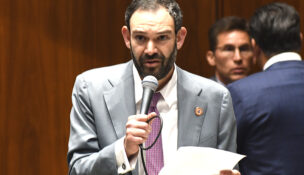Time
Arizona Capitol Reports Staff//May 18, 2007//[read_meter]
Robert Comer (inset) is scheduled to become the first inmate executed in Arizona since 2000. He has written letters (above) to prosecutors and judges for years urging them to carry...
No tags for this post.

















